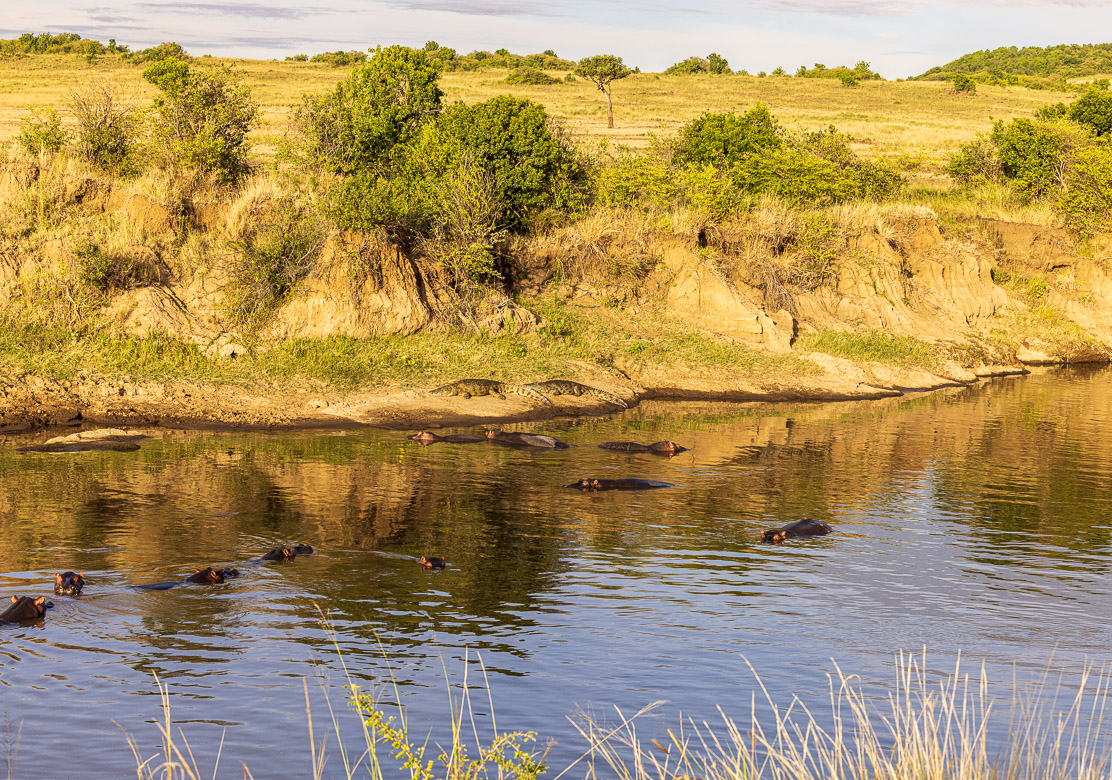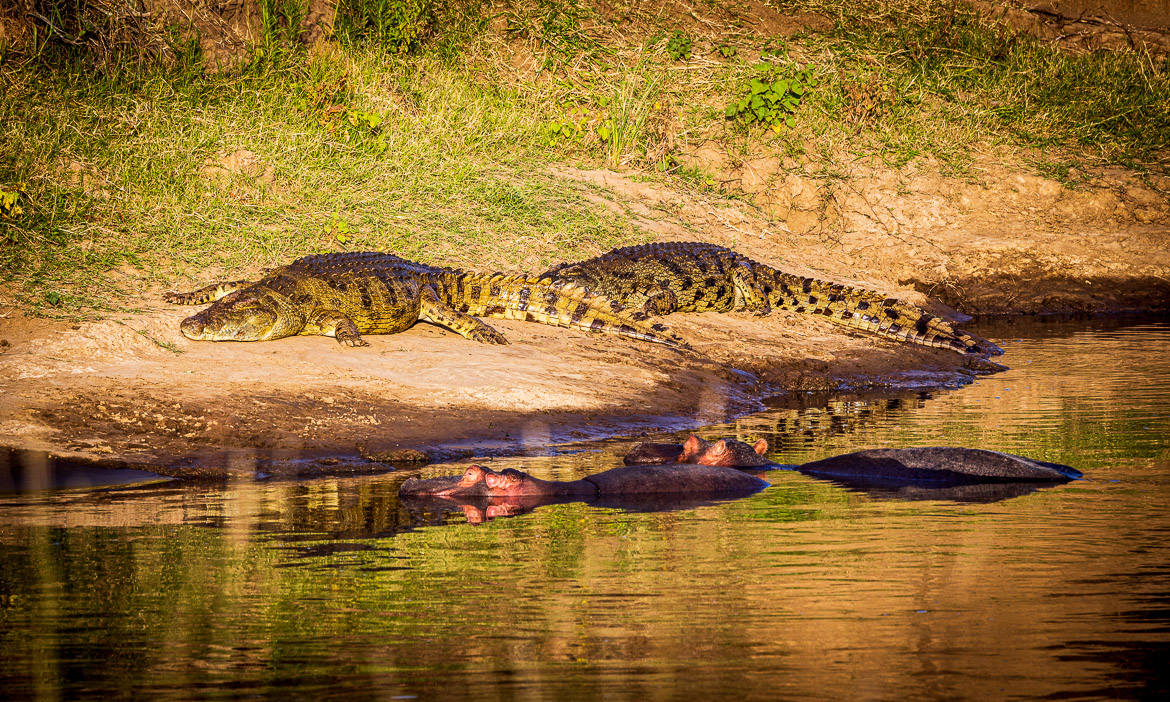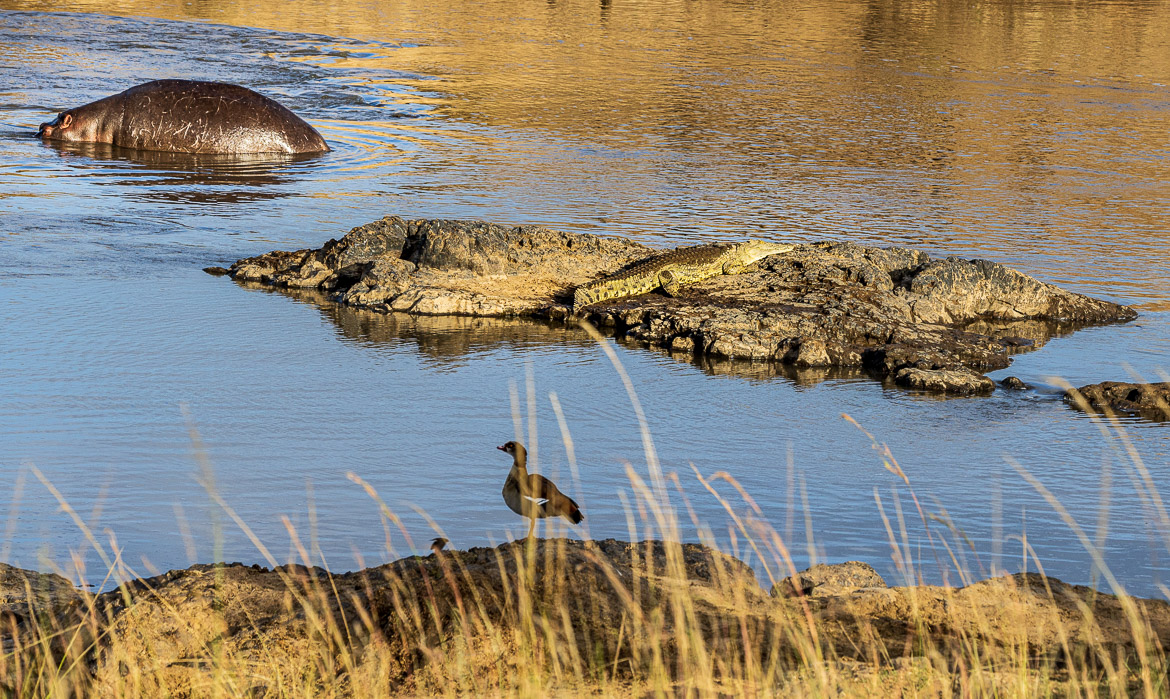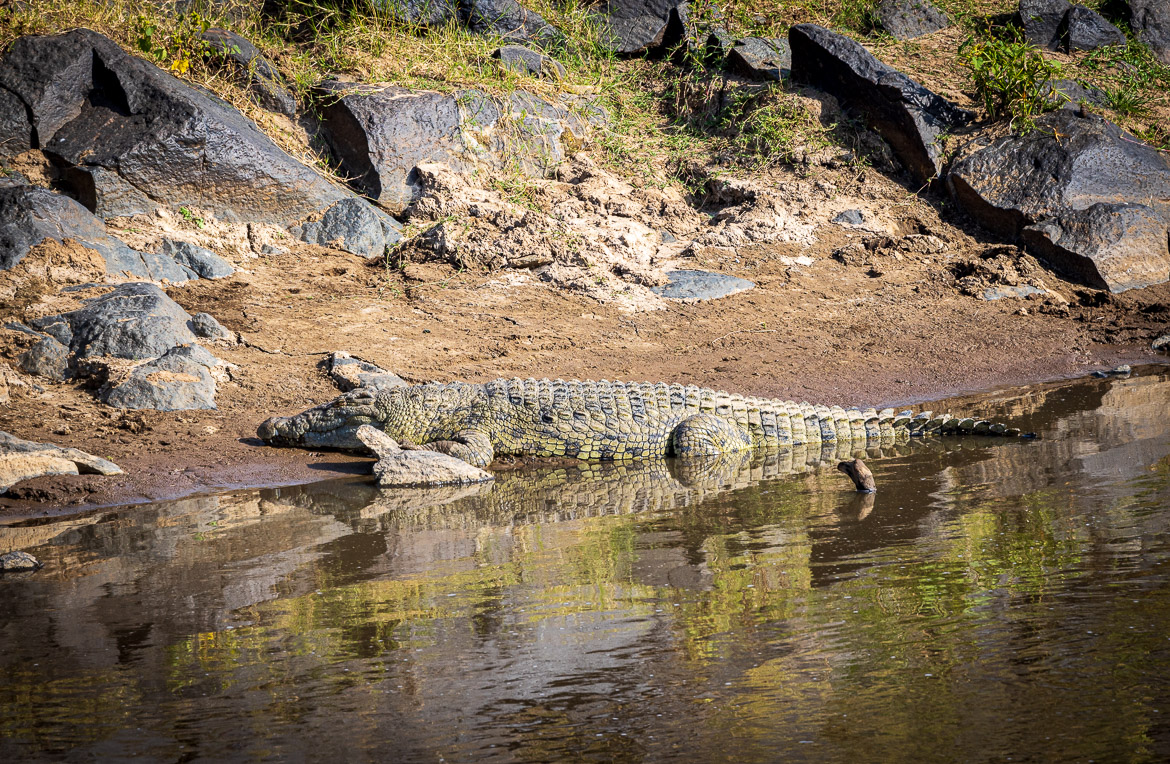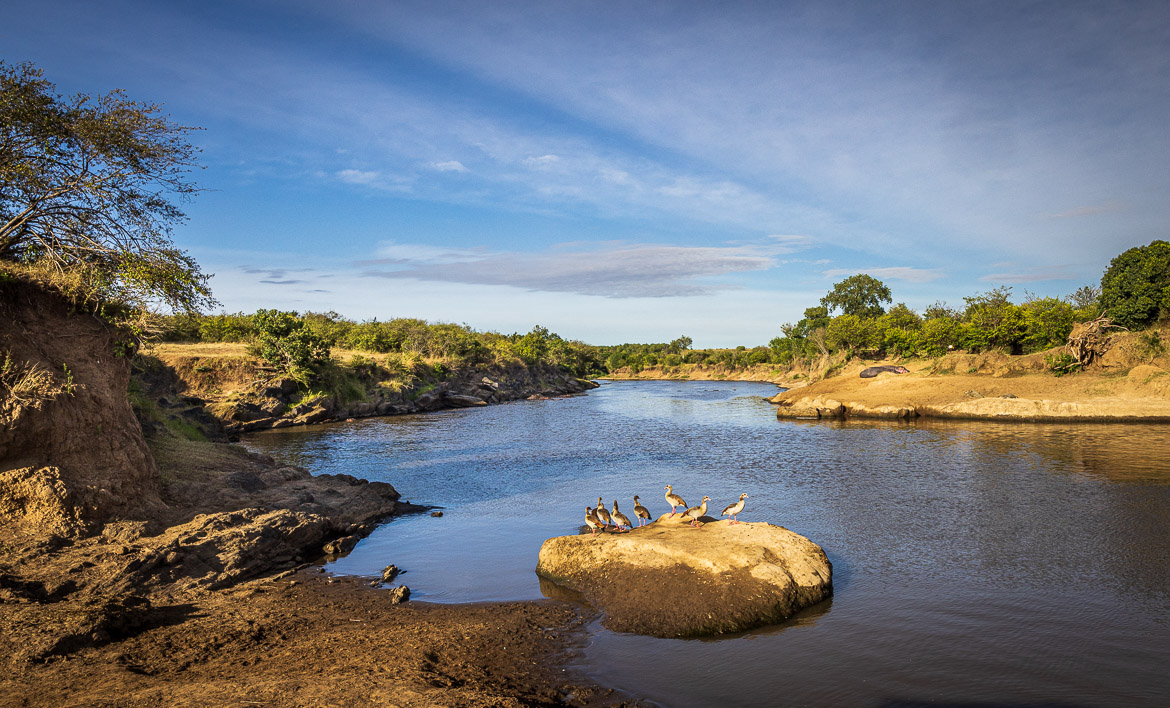
Through Masai Mara runs the Mara River, essential for the wildlife of Masai Mara. I captured a few images of the landscape and wildlife around the river. The different species often co-exist quite happily close to each other. The image above is typical with a few Egyptian Geese in the foreground, a couple of hippopotamus resting on the promontory in the background and behind and to the right of the hippos you can find a yellow-billed stork (you may need to blow up the image to spot the stork).
The Egyptian geese can be seen in more detail below. They are native to Africa south of the Sahara but can also be found along the River Nile. And the hippos are seen in the image to the right, but the yellow-billed stork has left!
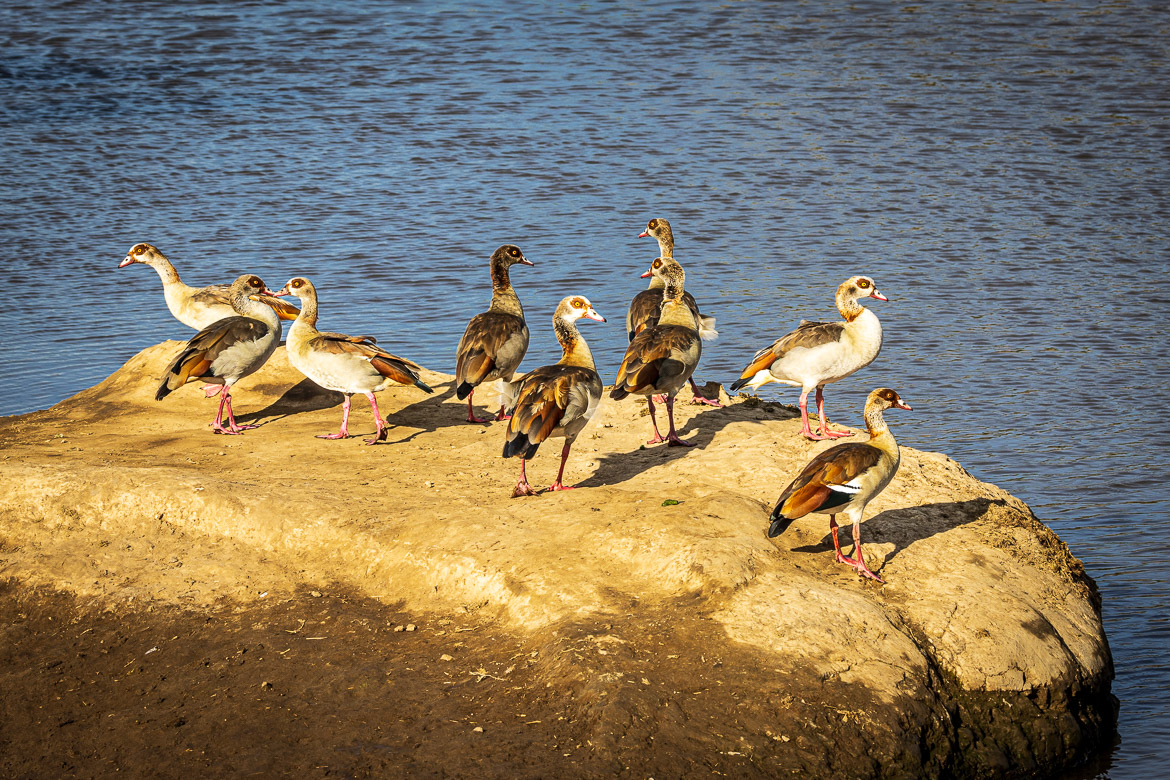
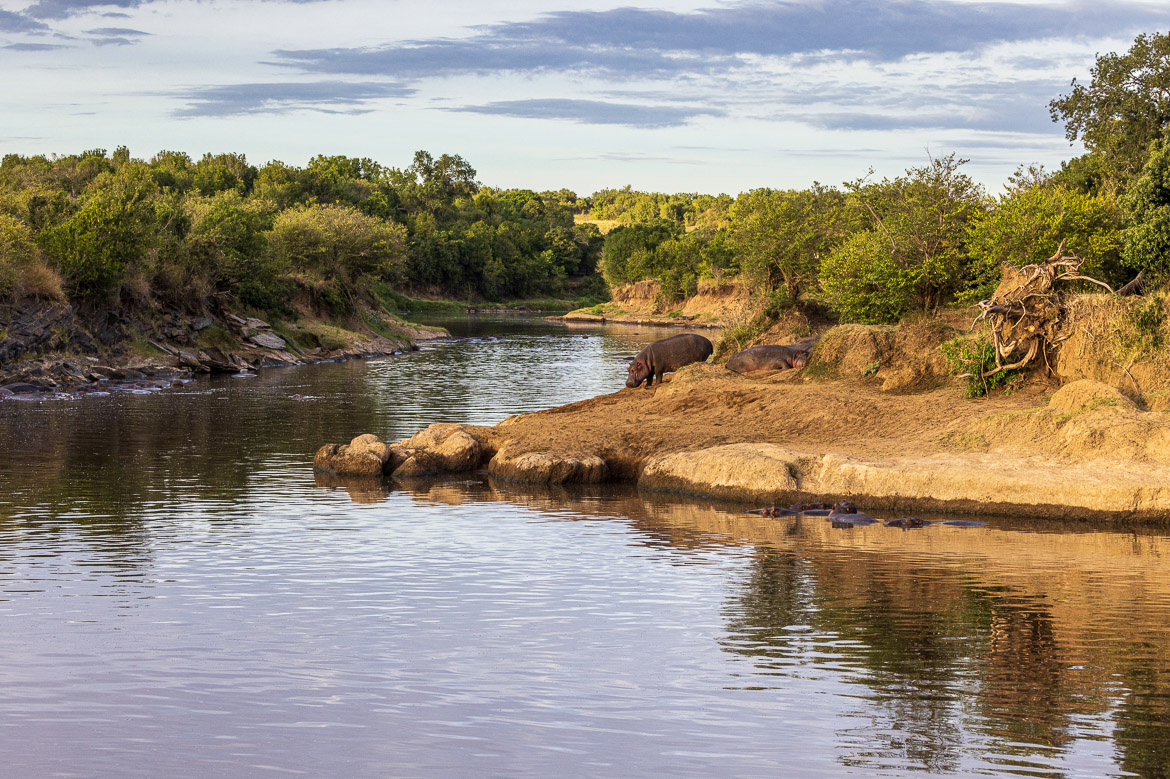
In another part of the river I found a Grey Heron and in the image to the right a grey heron is wading tighter with a yellow-billed stork. I loved the reflections in the shallow water.
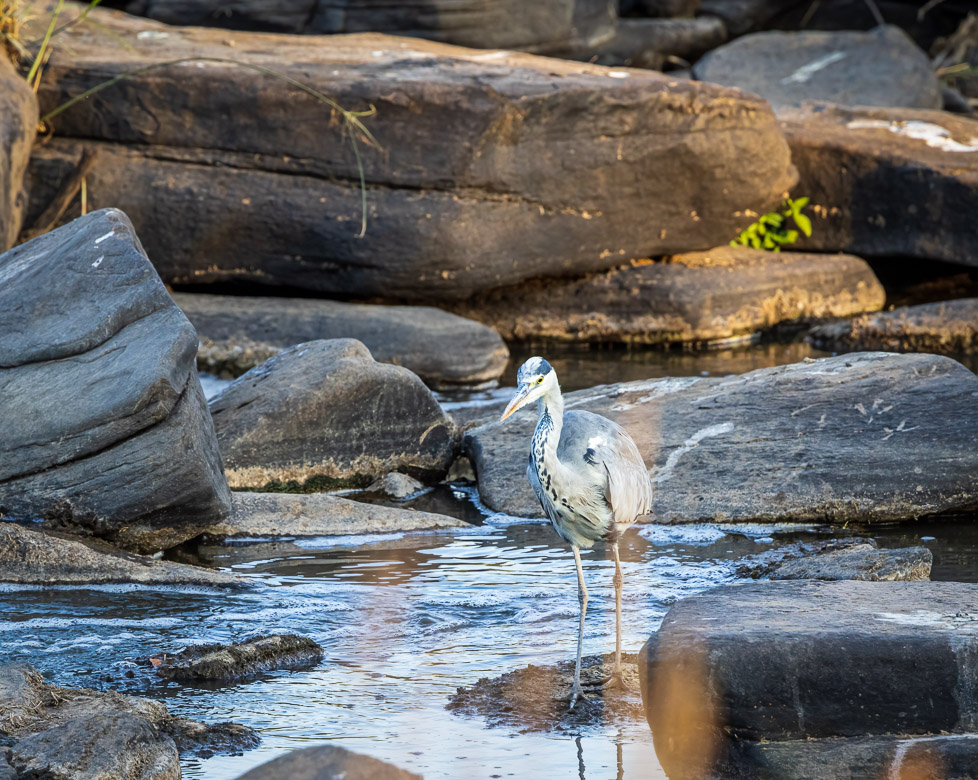
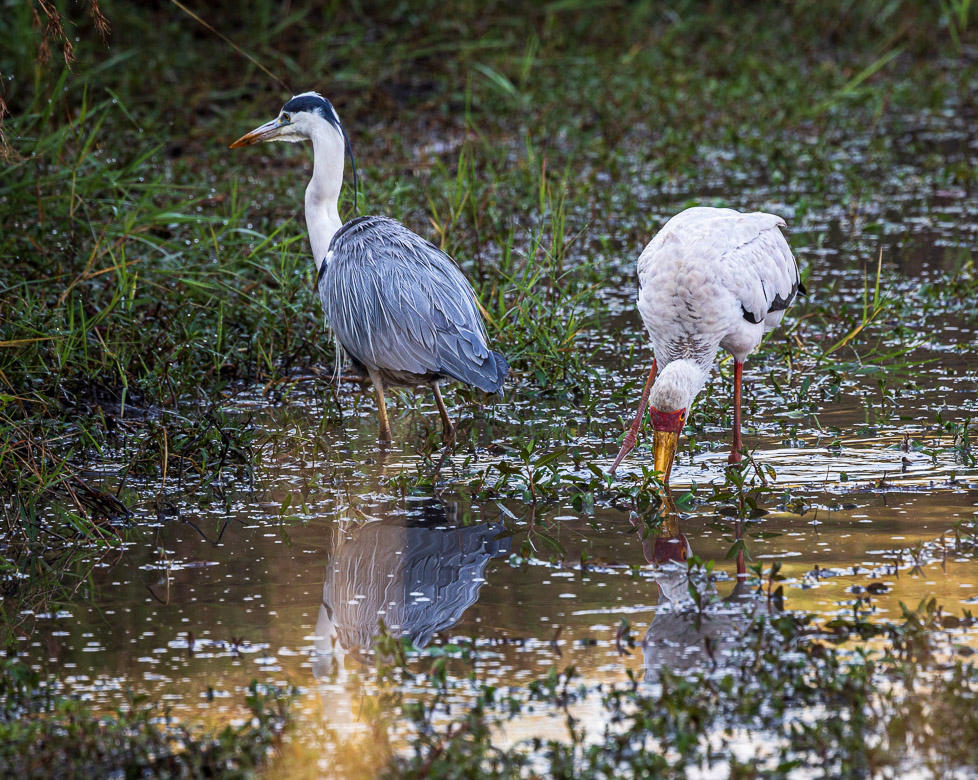
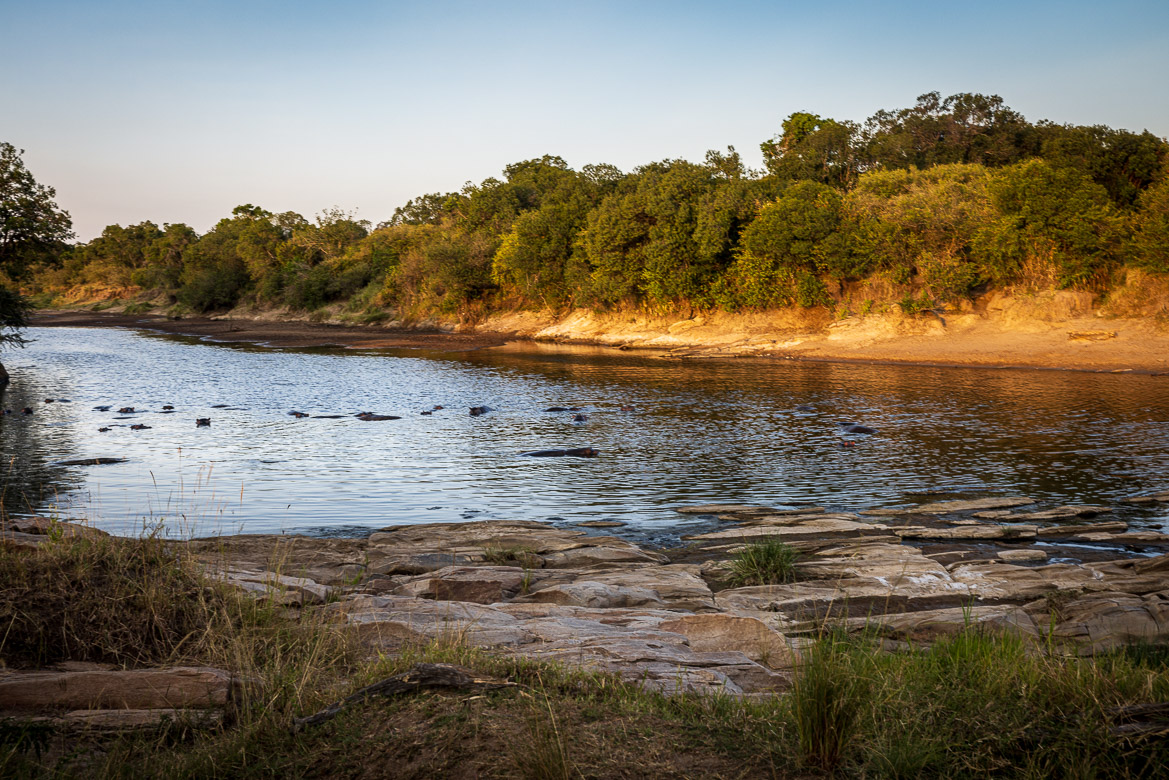
The hippos spend most of the time in the water cooling down (normally around 2/3 of the time is spent in water. Then they go up on land to graze mainly in the evenings, when it is cooler. They are aggressive and dangerous to humans and around 500 people are killed each year by hippos. That makes them far more dangerous than any other walking animal on earth for us human beings. Lions kill around 250 people a year. But by far the most deadly animals for us humans are the mosquitos, killing between 750,000 to a million persons a year! And snakes come second.
Their eyes and nostrils are set high on the bodies of hippos, so they can keep submerged nearly every part of their body but still be able to breathe and see their surroundings.
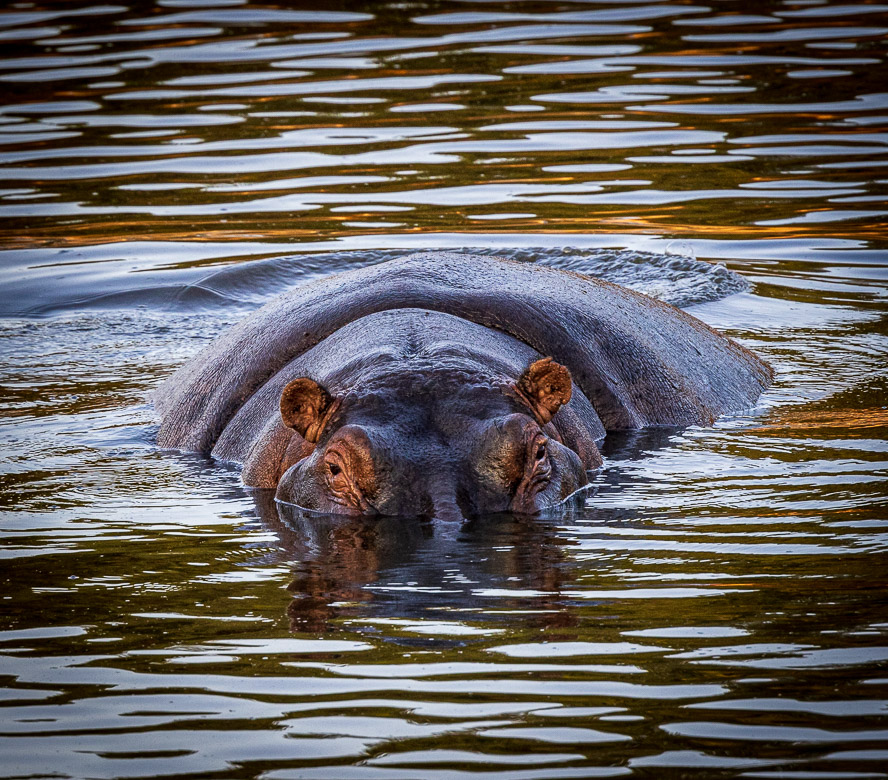
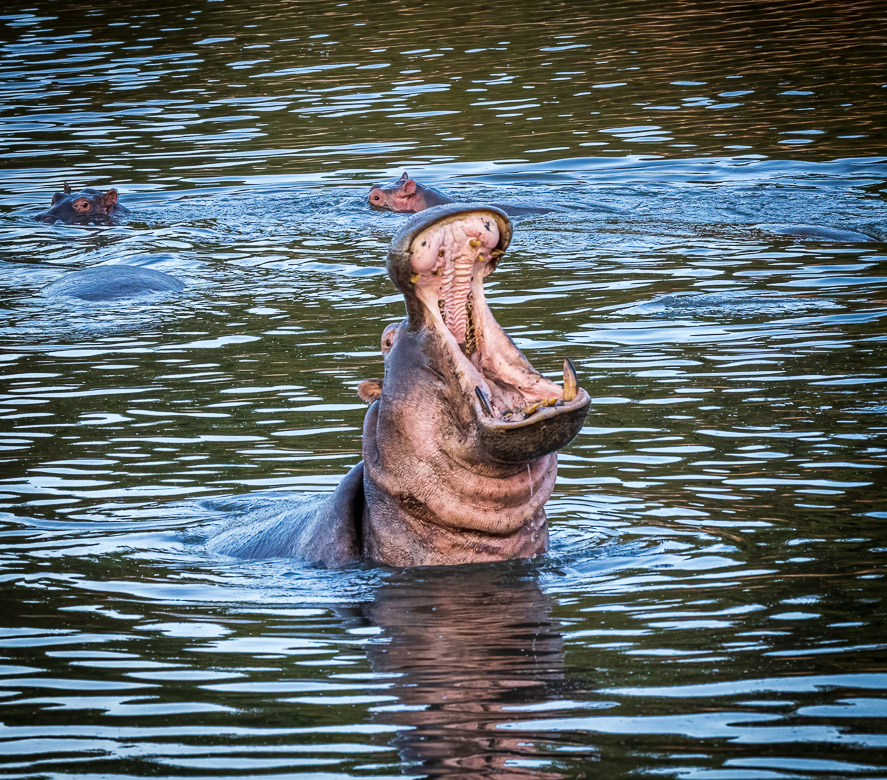
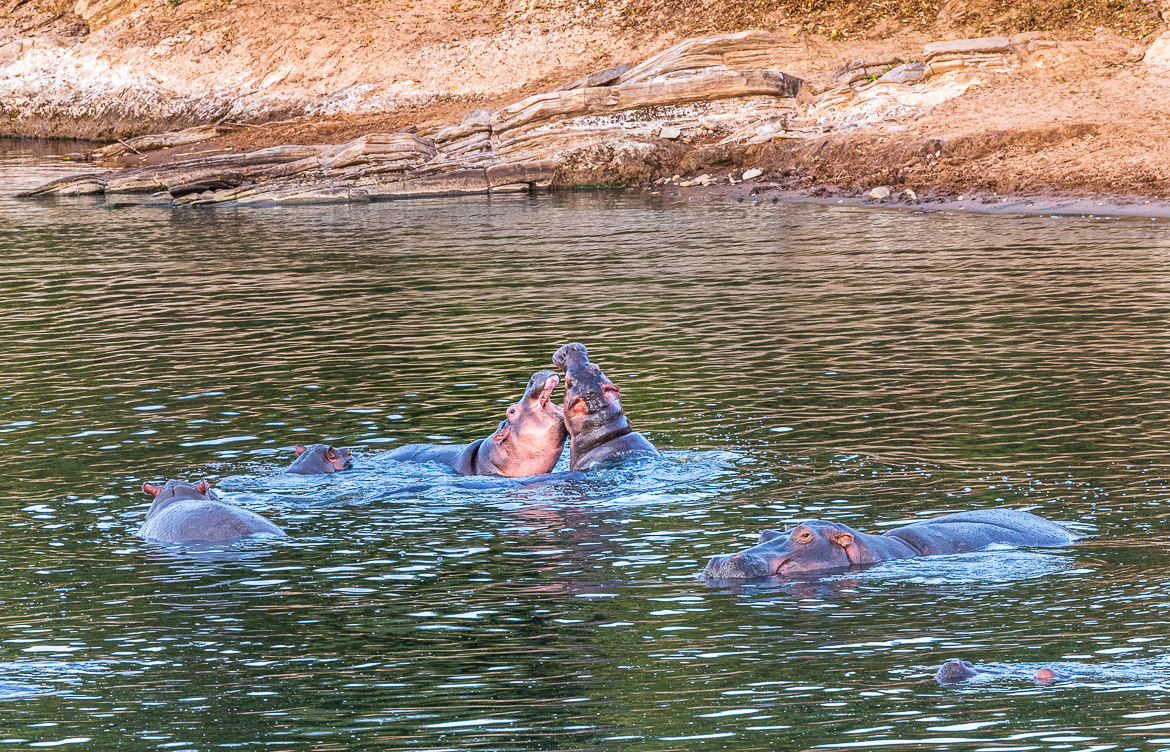
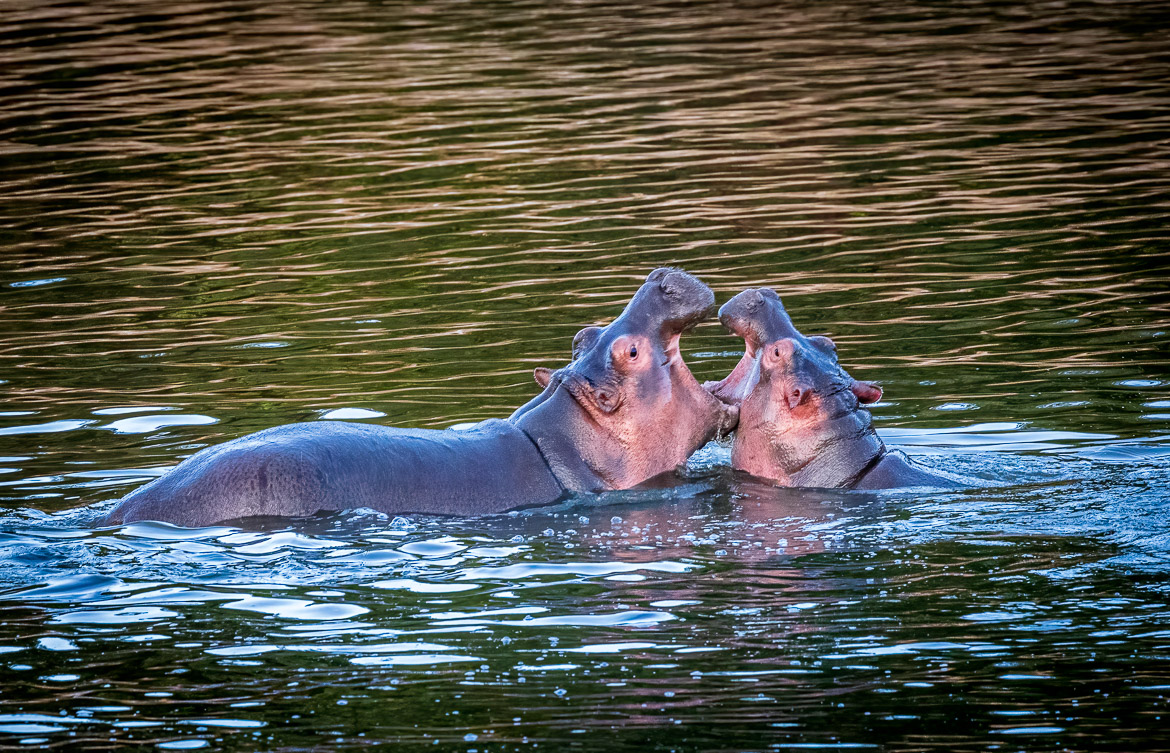
The Egyptian Geese could be found at many places. Here two of them are contemplating if they should have an evening bath or not. And in the second image one is just landing on a rock in the river.
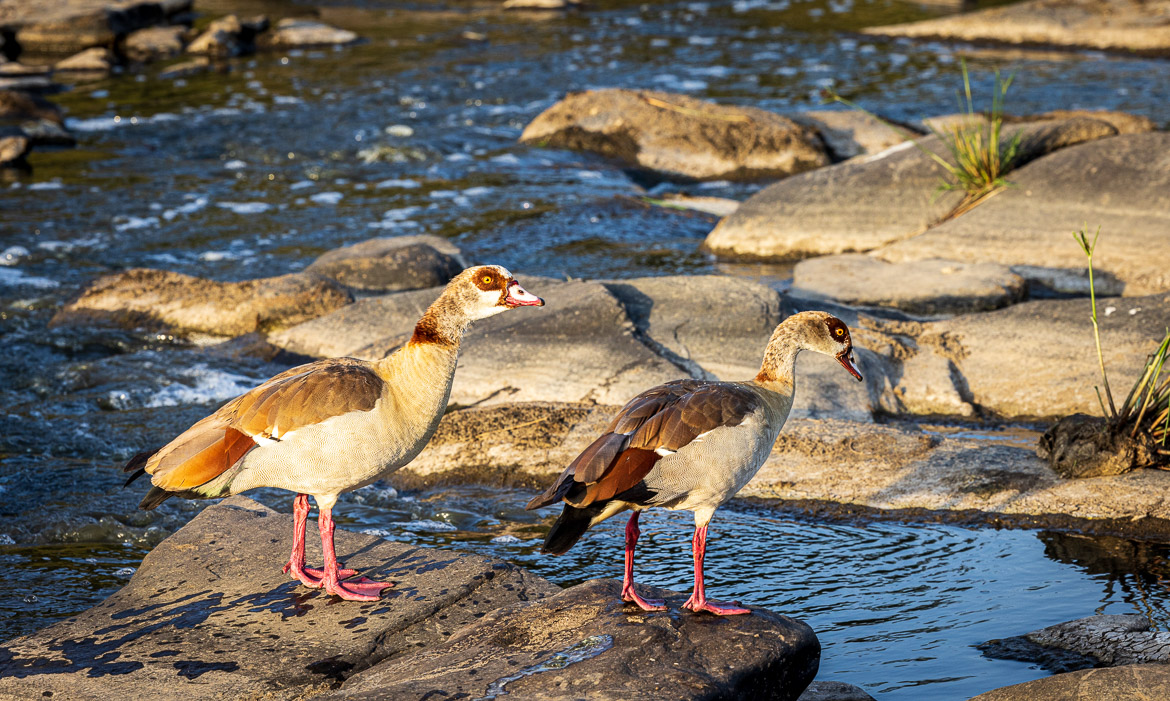
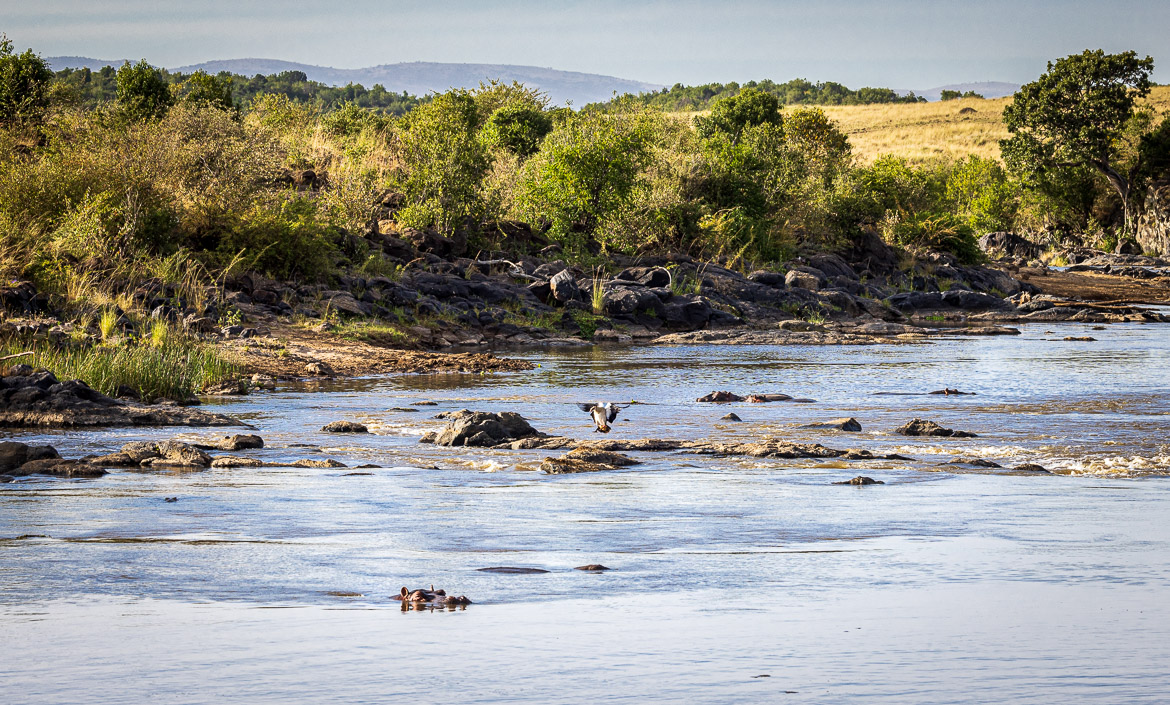
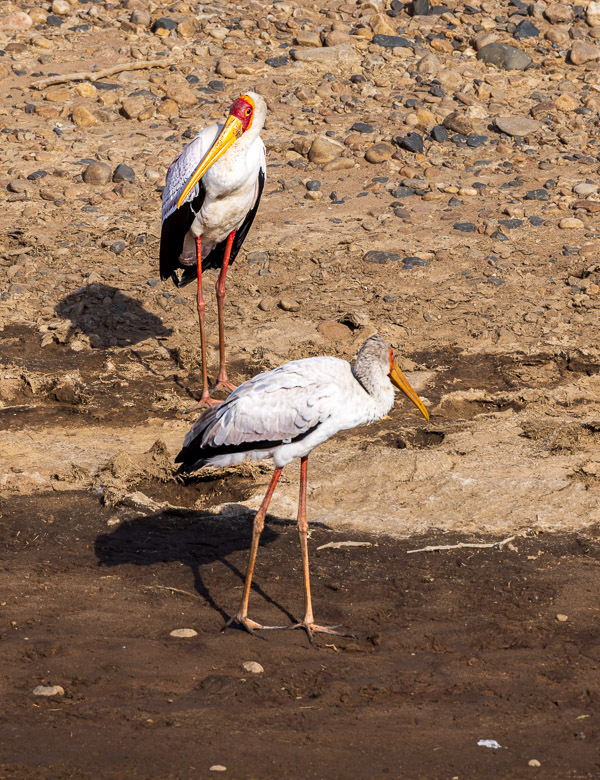
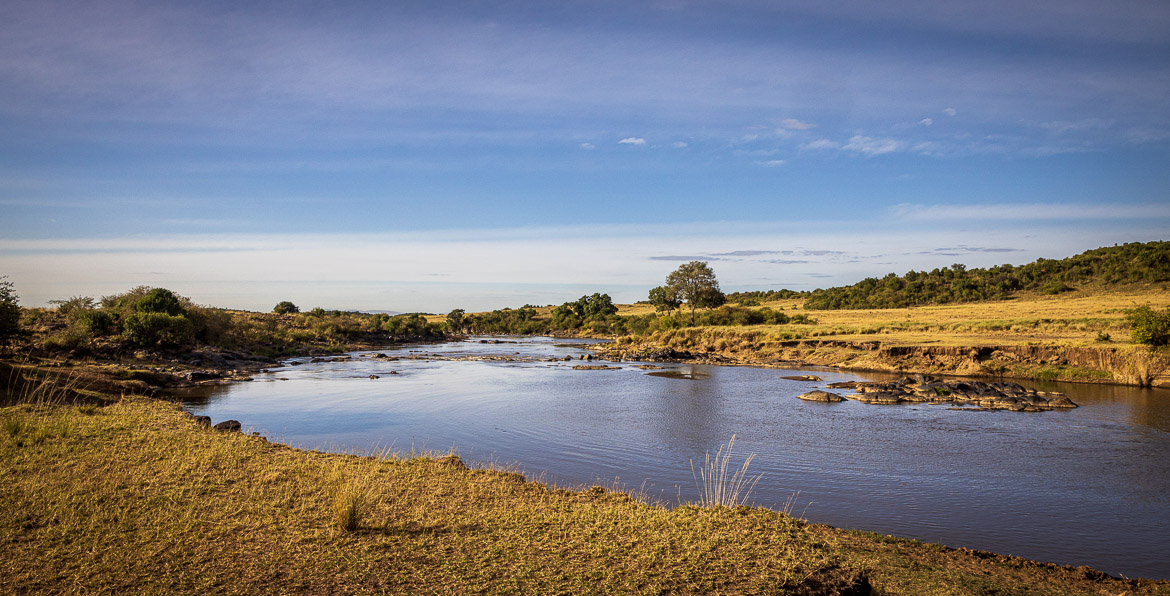
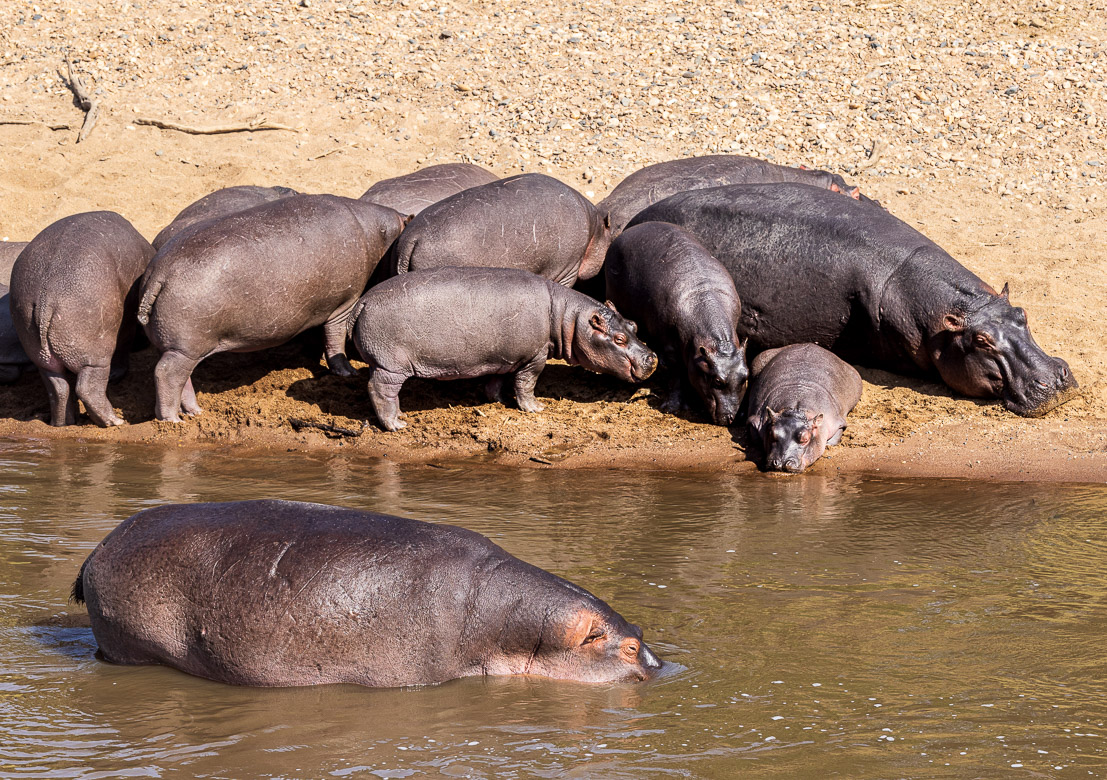
Crocodiles happily coexisted with the hippos, but the young hippos can be targeted by the crocs. In the water at the image below you see the hippos cooling down in the water, while on the river bank two crocodiles are resting in the sunshine. Crocodiles are the largest reptiles that still exist on the planet. Like all reptiles they regulate their temperature by alternating between sunny areas to warm up and shaded areas or going into the water to cool down.
